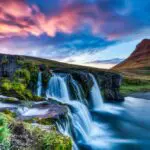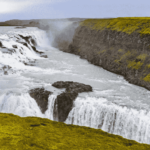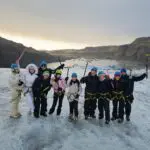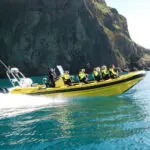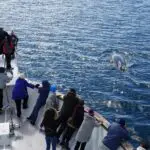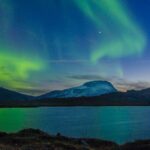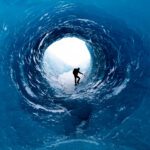We have stories of how many places in Iceland got their name. Reykjavik – Smokey Bay – was supposedly named by Ingólfur Arnarson, the first settler of Iceland. He had thrown his high seat pillars overboard when he saw Iceland and said he’d settle where they beached. They were found in Reykjavik, and the name is due to the steam he saw rising from the ground, possibly in Örfirisey (Grandi).
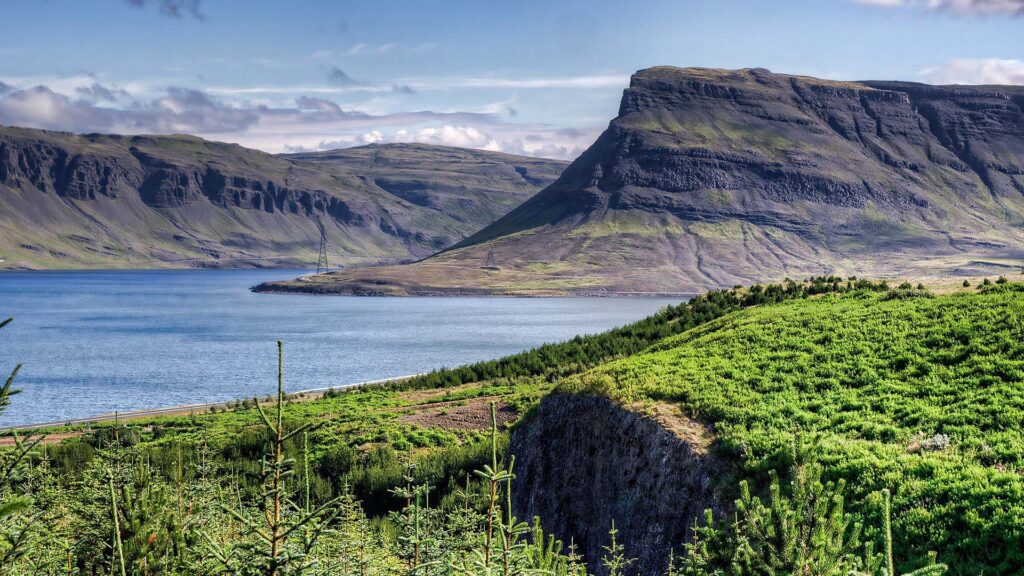
The following tale tells how Hvalfjörður – Whale Fjord – got its name. It is an exciting story with shipwrecks, stranded men, elves, curses and love.
Please signup for our newsletter for more fun facts and information about Iceland.
Read other fairytales and legends:
- The Shepherd of Silfrúnarstaðir
- The Genesis of the Hidden People
- The Deacon of Myrká
- The Tale of Búkolla – Version 1 and 2
- White Cap
- Dear Mother in the Pen, Pen
- The Story of Mjaðveig Mánadóttir
- The Bishop and The Elves
- Katla’s Dream
- Now I should laugh if I were not dead!
- The Story of Bergþór of Bláfell
- Móhúsa-Skotta
- “The Darkness is Fun”
- The Sorcerers in The Westman Islands
- The Two Sigurds
- Úlfsvatn
- The Man Servant and the Water-Elves
- The Merman
- Sæmundur the Learned and the devil
- Gold brow
Redhead – Rauðhöfði
In ancient times, it was widespread in the Reykjanes Peninsula to go out to Geirfuglasker skerry to collect birds and eggs. Those trips were always considered dangerous. They had to be prepared for good weather because the skerry was far offshore, and the surf around it was dangerous.
One time, a ship went out to Geirfuglasker. Some stayed on the boat, but others went the skerry for eggs. Then the sea quickly became turbulent, so they had to leave sooner than they would have liked. With difficulty, all but one of the egg gatherers made it to the ship. He was the last to come from the skerry because he had gone the furthest and thought they wouldn’t have to hurry. He was the son and breadwinner of a widow who lived near Melaberg in Hvalsnes parish.
When the man came down to the ship, the waves had become so large and dangerous that he did not reach the boat, no matter how hard he tried to find a way. The crew had to leave and believed the man was as good as dead unless he was soon visited. They then went ashore and told where they had been and that they had to go to the skerries and collect the man whenever possible. However, strong winds and surf prevented them from going to the skerry again all summer. People believed that there was no way they would ever see him alive again.
Then they went back again
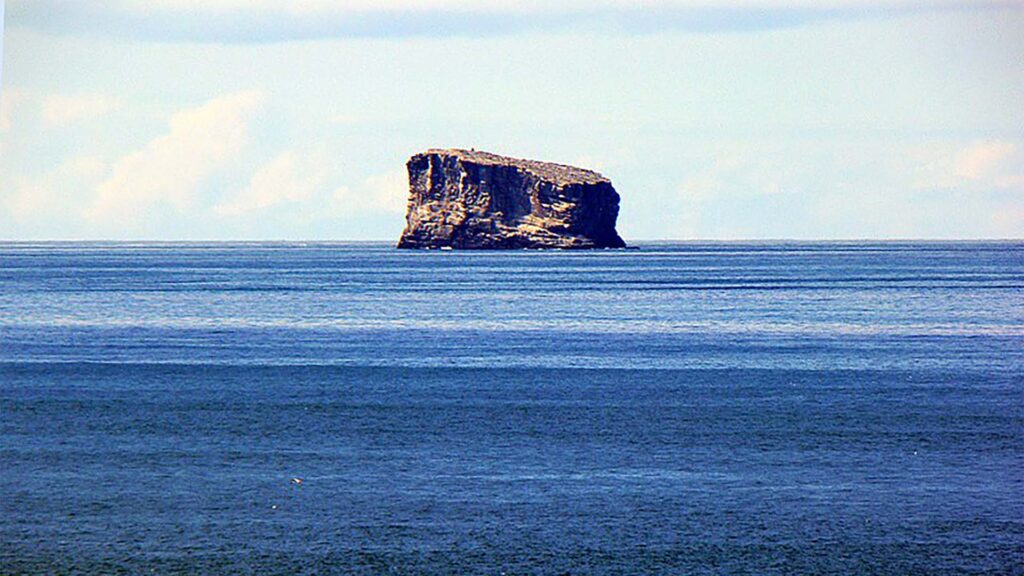
Winter came and went, and then the following summer, the men of Reykjanes went to Gerifuglasker skerry as they were used to. When the egg collectors came up to the skerry, they were surprised when they saw a man walking there, as they did not expect any people there.
The man walked up to them, and there they recognized the man they had left behind the previous summer. It dawned on them that something strange was going on. They became curious to know how this could be, that he was still alive. But the man vaguely answered their questions, but he said he had spent the winter on the skerry and that he had been comfortable.
Yet he asked them to take him ashore, and they did so willingly. The man from Melaberg was the happiest but still rather quiet. There was the greatest celebration when he came ashore, and everyone thought this event was wonderful. Still, the man did not clearly explain what happened to him on the skerry.
Time passed, and people stopped talking about this event. But late in the summer, one fine weather day, when mass was being held in Hvalsnes, an event shocked everyone.
A strange cradle appears
There were many people at the church, including the man from Melaberg. But when the people came out of the church, a cradle with a baby was at the door. On top of the cradle lay an exquisite blanket. Everyone stared at this; no one went to the cradle or the baby, and no one knew who was there.
Now the priest came out of the church. He sees the cradle and the baby and wonders at all this no less than others. He then asks if anyone knows whose cradle and baby it is, who brought it, or if anyone wants him to baptize the baby. But no one let said anything, and no one seemed to care that he baptized the child.
But the priest felt the whole incident with the Melaberg man odd, so he asked about the child. The man answered dryly and said he knew nothing about the cradle or the child and didn’t care about either of them.
But the priest thought that the whole incident with the Melaberg man was sexual; he asked him about all this more than anyone else. Still, the man responded dryly and said that he knew nothing about the cradle or the child, as the elder did not care about either. While the man was saying this, a woman stood by them, beautiful, captivating, and expressive.
She took the cover off the crib, snuck it into the church, and said: “The church won’t pay.”
Then she turns to the Melaberg man and says to him angrily: “But you will become the worst and most dangerous whale in the sea.” She then grabbed the cradle with the baby, disappeared with everything, and was not seen again.
The priest took the cover and had it made into an altar cloth for the church, and it has been there for a time and was considered the greatest treasure.
The Curse becomes true
Now the story turns to the Melaberg man. He was so startled by the strange woman’s words that he immediately ran from the church to his home. He did not stop there but wandered like a madman north until he came to Hólmsberg rock, west of Keflavík, but the rock faces the sea, rather high and steep.
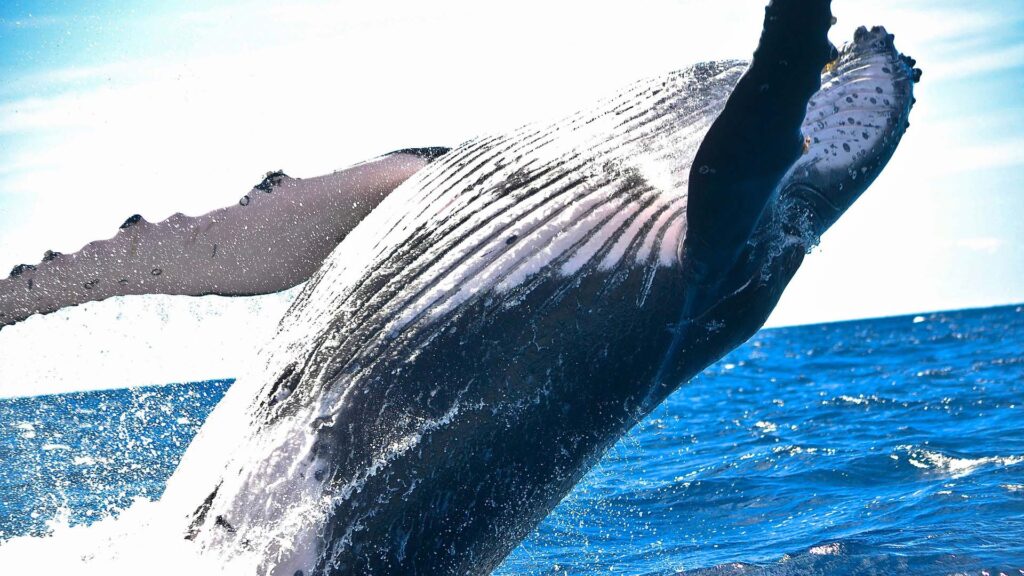
When he reached the edge of the rock, he paused. He suddenly became so big and swollen that the rock burst under his feet, and a huge rock jumped out of the rock’s face. The man jumped into the sea and turned into a giant, scary whale with a redhead in the same instant because he had a red cap on his head when he turned into the whale. Because of this, he was then called Rauðhöfði (Redhead). But the rock that threw him into the sea still stands to the east under Keflavíkurberg rock and is called Stakkur.
What happened on the skerry?
It is said that he had said he had spent the winter in the skerry with elves and been well cared for. (Some say that the man’s name was Helgi, and that’s why the skerry has since been called Helgasker.) Everyone would have been happy there, but he would not have been able to take pleasure in it.
When his companions on the skerry had left him behind, he had walked around it in desperation. He thought of throwing himself into the sea and drowning to end his misery. But then he said that a girl had come to him, peaceful and beautiful, and offered him to stay for the winter and said she was one of the elves who lived in Geirfuglasker skerry.
He accepted the offer, but due to his malaise, he was allowed to go home the following summer. Then he said that the elf girl had said she was pregnant with his child and he should remember to have it baptized if she came to a church where he was present, but if he didn’t, he would pay for it cruelly.
Some say that the man told his mother about this sometime privately during the summer; some say that he did it as soon as he walked around Melaberg from the church the last time. Still, some say that he told it to one of his confidants. But it is not mentioned why he broke away from the elf woman’s order with the baby’s baptism.
But now the story turns to Rauðhöfði. He took up residence at Faxaflói and surrounded men and ships there, so no one was safe at sea between Reykjanes Peninsula and Akranes Peninsula. He did a lot of damage, but no one could do or prevent this disaster. Many people had to suffer because of him. Lastly, he moved to the fjord between Akranes and Kjalarnes, now called Hvalfjörður (Whale Fjord).
The Priest and the Whale
An old priest lived in Saurbær on Hvalfjarðarströnd in Hvalfjörður who was blind but otherwise healthy. He had three grown-up children; two sons and one daughter. They had their future ahead of them, and their father loved them very much. The priest was old-fashioned and saw further than his nose. His sons often rowed out to the Hvalfjörður fjord in a boat to fish. But once they came across Redhead, and he drowned them both.
Their father, the priest, heard that his sons were drowned and why. He was heartbroken. One fine day a little later, he asks his daughter to come and lead him down to the fjord, which is not far from the farm. She does so, but the priest brings a walking stick. With the help of his daughter, he staggered to the sea, placed the walking stick in front of him into the floodplain, and then leaned on it. He then asks his daughter what the ocean of Hvalfjörður looks like. She says he is very beautiful and smooth.
A little while later, the man asks again what the sea looks like. The girl says that from outside the fjord, she sees a pitch-black streak, like a giant fish coming into Hvalfjörður. And when she said that this streak had come close to meeting them, the priest asked her to walk him by the beach, and she did so. The röstin was always facing them, continuing until they reached the bottom of the fjord. But when they got to the shallow, the girl saw that a giant whale had made the streak. It swam straight into the fjord as if it was being chased or drawn.
The Whale Follows
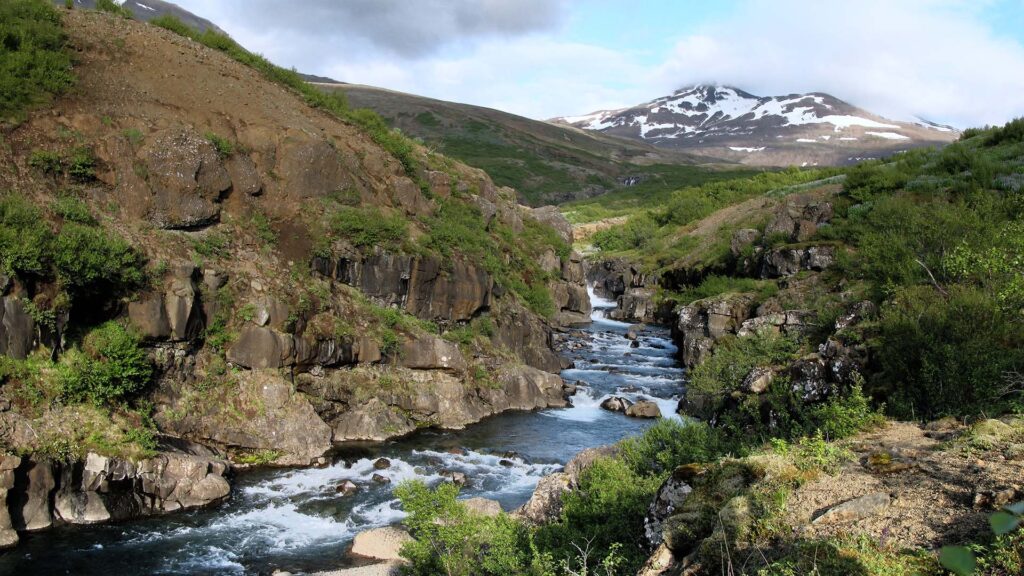
When they reached Botnsá River, the clergyman asked his daughter to lead him up the river on the west side. She did so, and the man staggered up the mountainside with the river. The whale rushed up along the river, which was very difficult for him because of the lack of water.
But when he entered the canyon through which the river flows from Botnheiði heath, it got so tight that
everything trembled as the whale rushed forward. But when he went up the waterfall, the earth around him shook as if in the greatest earthquake. From that, the waterfall gets its name and is called Glymur (Rumble), and the hills above Glymur are called Skjálfandahæðir (Shaking-hills). Glymur is the second-highest waterfall in Iceland.
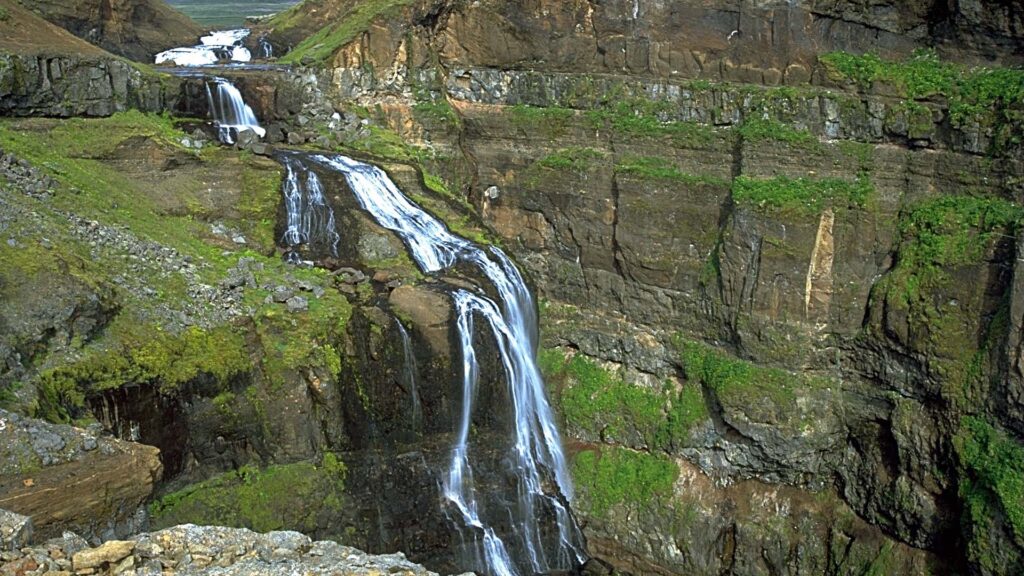
The priest didn’t stop until he brought the whale up to the lake where Botnsá comes from, which has since then called Hvalvatn (Whale Lake). One fell is by the lake, and it also takes its name from this event and is called Hvalfell (Whale Fell).
When Rauðhöfði got into the water, he exploded from the effort to get up there. Since then, he has not been seen, but magnificent whale bones were found in the water, which is considered to give this story credence. But when the priest had finished putting the whale in the water, he staggered back home with his daughter, and everyone thanked him profusely.
And this is how Hvalfjörður got its name.
Please signup HERE for our newsletter for more fun facts and information about Iceland!


